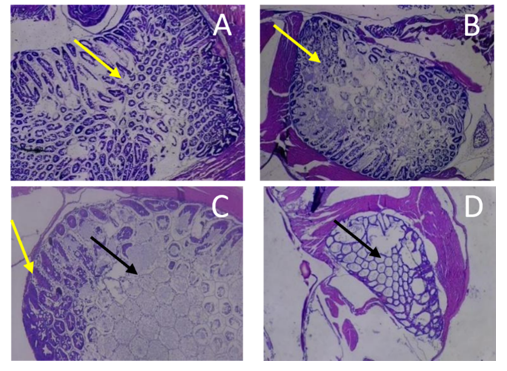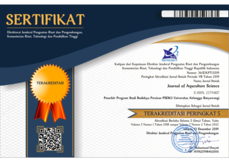Artificial Seawater Use of Bittern Minerals on the Survival and Growth of Vannamei Shrimp (Litopenaeus vannamei) and Potential Resources

Whiteleg shrimp (Litopenaeus vannamei) cultivation can be carried out in areas far from the sea with the RAS (Recirculating Aquaculture Systems) system using artificial seawater (ASW) added with bittern as a mineral source. This study aimed to determine the effect of artificial seawater formulation using bittern minerals on growth, survival, glucose levels, and hepatopancreas histology in whiteleg shrimp. This study used a completely randomized design (CRD) with 5 treatments and 4 replications including (P0) seawater; (P1) 18.56 grams of crossover salt + 8.4 ml/liter of bittern; (P2) 14.93 grams of crossover salt + 16.86 ml/liter of bittern; (P3) 11.53 grams of crossover salt + 25.13 ml of bittern/liter; (P4) 23 grams of crossover salt/liter. This study began with the crystallisation and characterisation of bittern, continued with mineralisation tests, and prepared artificial seawater using a combination of salt and bittern solutions. Cultivation was carried out for 20 days, and then survival, growth in length and weight, water quality, blood glucose, and histology of hepatopancreas tissue were observed. The formulation of artificial seawater treated with P1 was the best, with a survival rate of 78% and growth no different from control seawater. Therefore, artificial seawater has the potential to be used for the cultivation of whiteleg shrimp.
Copyright (c) 2025 Rr Sonia Rahmania Sonjaya, Mayvita Nur Faizah, Rizka Tri Puji Haryanti, Khansa Ilma Nafi'ah, Nadia Priyandra Laksmidewi, Ahmad Shofy Mubarak, Muhamad Amin, Yasha Husnacahya

This work is licensed under a Creative Commons Attribution-NonCommercial-ShareAlike 4.0 International License.



















